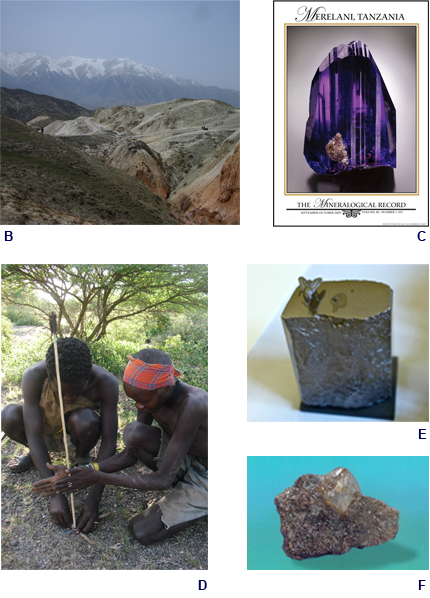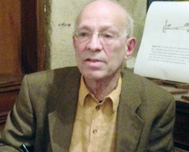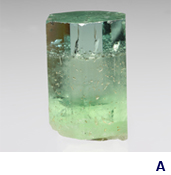 |
| Books | About the Author | Pubilcations | Contact | Links | My cart |
|
About the Author : John M. Saul was born in New York City in 1937. He worked as an undergraduate geologist in West Africa. On receiving a Ph.D. in geology from the Massachusetts Institute of Technology in 1964, he moved to East Africa and then to Paris, his base for professional trips to many odd corners of the world. |
|
 A : Zoned crystal of aquamarine, Gilgit District, Pakistan, 4.0 cm. |
From contacts with peoples as different as Chinese colleagues and the flat-earthers of Turkanaland of northern Kenya, he gradually became aware that the beliefs of peoples everywhere had the same long-ago origin: the world Below was to be modeled on the heavens Above, As Above, So Below. This one idea was at the origin of science, religion (because it promised oneness with the immortal gods Above), kingship (in which the king’s original role was to spread the “grace of heaven” upon the people), and literature, as in the partly astronomical account of King Gilgamesh’s quest for immortality. These ideas are presented in The Tale Told in All Lands in which a short chapter The Limits of History [Download] describes the method the author uses in addressing historical questions as varied as the placement Troy and Jerusalem and the unsuspectedly deep pre-histories of the Nazi ideology and of Rwandan belief. What the Stork brought (2019), subtitled African click-speakers and the spread of humanity’s oldest beliefs, extends ideas from The Tale Told in All Lands (2013), tracing them back into deep prehistory. Astronomy, it turns out, is not the oldest science after all. That honor goes to ornithology as Earthbound humans tried to imitate certain birds who would return, seemingly young again, after their mysterious annual disappearance. We all share a single biological heritage. What the Stork brought shows that we also all share a single cultural heritage, a worldwide tradition that began at a time long before we left Africa when one of our two most distant cultural forebears understood that the other was asking "What shall we do about death?" Geology is an historical science, and the author’s observation that everything in the human sphere is connected also applies to the history of our planet. As set out in the [Preface] of A Geologist Speculates, the author argues, for the existence of fundamental connections among ancient impact-scars of the sort that mark the surface of the Moon, the initiation of plate tectonics, the first appearance of complex animals during the “Cambrian Explosion”, the formation of deposits of rubies and sapphires, and the origin of oil and gas. The books all address the matter of origins. With time, the author found that he was also comfortable treating other questions of “origins”, whether the origins of cancer [Download], of the influenza pandemic of 1918 [Download] or of homosexuality. [Download]
|

